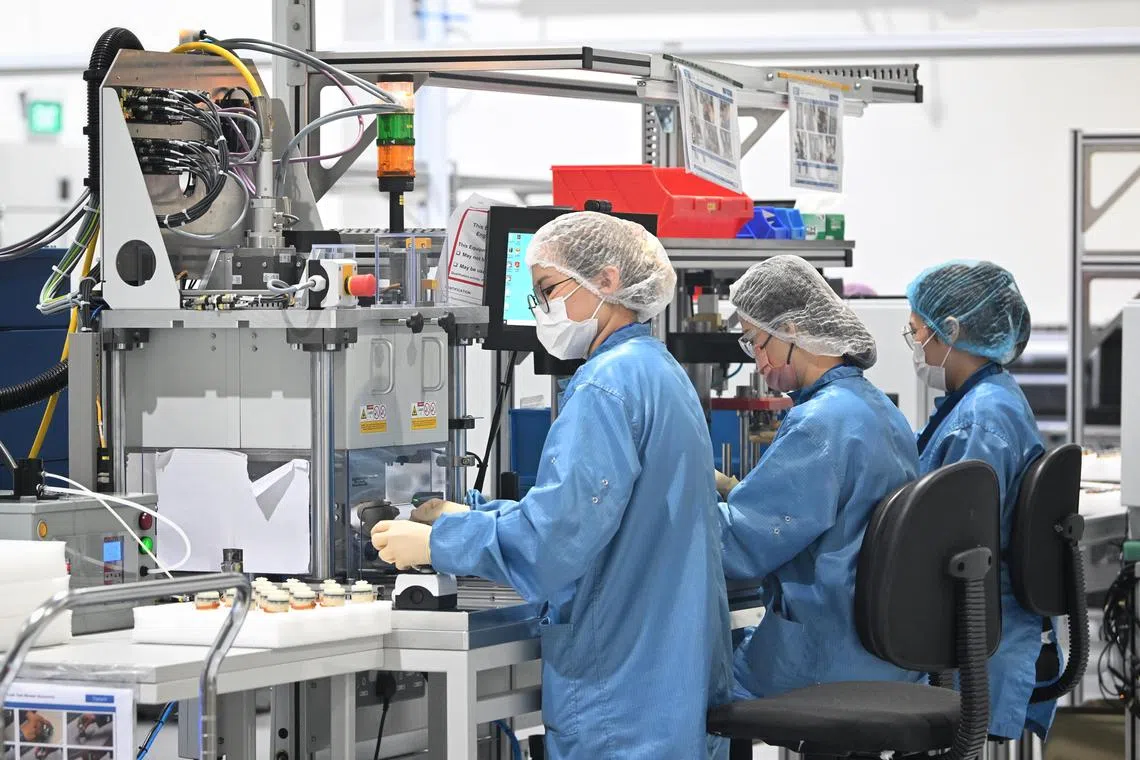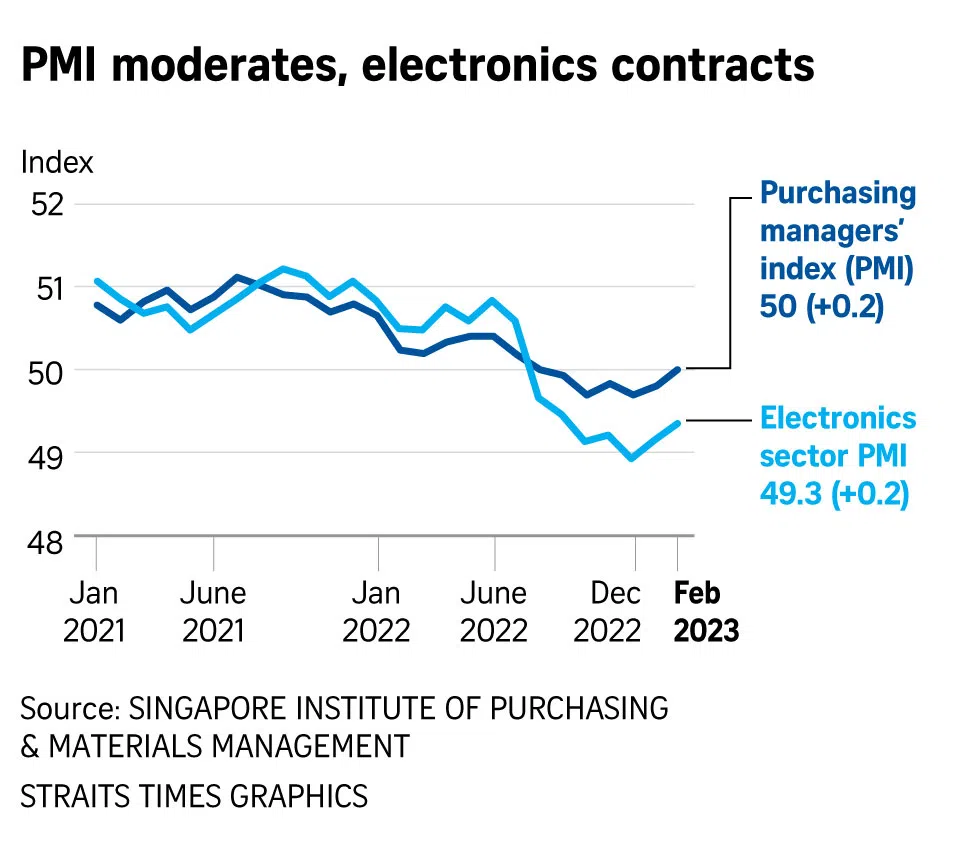S’pore manufacturing activity stabilises after 5 months of contraction with China reopening
Sign up now: Get ST's newsletters delivered to your inbox

The latest PMI readings are a welcome respite for Singapore manufacturers, hit with dampening global demand, high inflation and interest rates.
PHOTO: ST FILE
Follow topic:
SINGAPORE - Singapore’s manufacturing activity edged up in February to exit five months of contraction on China’s reopening boost, but analysts said it was too soon to call a recovery for the sector.
The purchasing managers’ index (PMI) – a key indicator of trends – came in at 50 in February, up 0.2 point from January. A reading over 50 indicates expansion, while one below that points to contraction.
This was attributed to an improvement in new orders, an expansion in factory output and a slower contraction in new exports.
The electronics sector PMI saw another 0.2 point uptick to a slower rate of contraction at 49.3. This was nonetheless the seventh straight month the industry shrank.
The latest PMI readings are a welcome respite for Singapore manufacturers hit with dampening global demand
Ms Sophia Poh, SIPMM vice-president for industry engagement and development, said: “China’s lifting of strict Covid-19 restrictions has boosted demand and eased the supply situation, but geopolitical risks remain unabated in the global markets.”
China’s factory activity expanded at the fastest pace in more than a decade in February after the lifting of Covid-19 restrictions and the Chinese New Year holiday. China’s reopening boosted production in South-east Asian manufacturing hubs like Vietnam and Thailand. But the slump persisted in bigger economies like Japan and South Korea with cooling global demand.
OCBC Bank chief economist Selena Ling said: “(The PMI readings are) generally in line with the pickup seen in other regional manufacturing PMIs led by China on the back of the Chinese reopening theme, but also the reduced recession risks seen in other major economies like the United States and Europe as recent economic indicators have been relatively resilient.”
Going forward, it would be key to see a further improvement in new export orders for this upward momentum to be sustainable, said Ms Ling.
She added: “At this juncture, both new export order gauges for manufacturing and electronics remained in the contraction territory, implying that while things are gradually turning around, it may be too early to break out the champagne for now. More importantly, the employment gauges for both manufacturing and electronics have turned further south, suggesting that business confidence has not yet returned strongly.”
Ms Ling said the electronics industry may see further gradual improvement in the coming months as global demand picks up and China’s reopening accelerates. “However, the complicating factor is that US-China relations remain fragile, especially on the semiconductor front,” she added.
The latest electronics PMI reading was attributed to a slower contraction in the key indexes of new orders, new exports, factory output and inventory.
The employment index reverted to a contraction at 49.8 after recording a moderation reading in January. Prior to that, it had posted 23 months of consecutive expansion. The electronics employment index fell to 49.3 from 49.6 in January.
Maybank economist Chua Hak Bin believes it is too early to tell if the manufacturing sector is on its way to recovery despite the improved PMI reading in February, although it is possible that the worst of the downturn is over.
“The rebound in PMI suggests that the manufacturing downturn may be shallow. China’s reopening is helping to offset the slowdown in the US and Europe,” he said.


